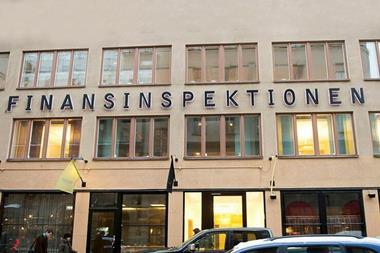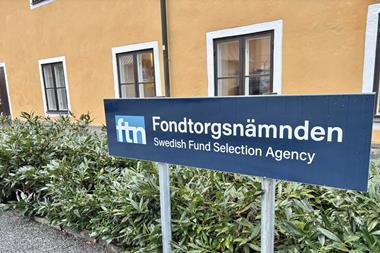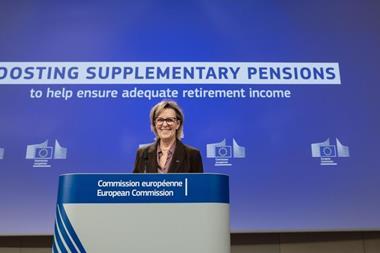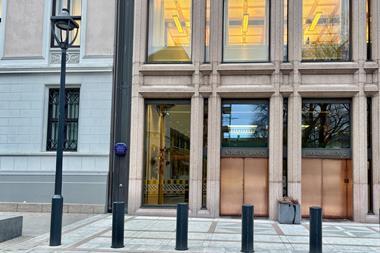EUROPE - SEB, the Swedish banking group, saw operating profits in its life business fall.
The life unit, which consists of three business areas - SEB Trygg Liv (Sweden), SEB Pension (Denmark) and SEB Life & Pension International - saw its operating profits fall by 12% to SEK511m (€57m) year on year.
The decrease was mainly a result of lower returns in investment portfolios and reduced income from the traditional life portfolios in Denmark and the Baltics.
The Swedish result improved, supported by strong income in the unit-linked area. The total unit-linked fund value was unchanged from year-end 2010, at SEK 180bn, but grew quarter on quarter.
At the end of the first quarter last year, the unit-linked fund value stood at SEK165bn. Compared with the end of 2010, profits were up 1%.
Total assets under management increased by 4% to SEK425bn compared with the first quarter last year, but largely unchanged from the SEK424bn at year-end 2010.
As result of the earlier acquisition of Irish Life International, the portfolio bond offering will be enhanced. This company has assets under management of some SEK18bn and premium income of SEK3bn.
SEB said the acquisition would strengthen distribution capacity across Europe, "especially in the private banking segment".
SEB's wealth management arm, which comprises private banking as well as institutional clients, saw operating profits increase year-on-year in the first quarter by 28%.
However, profits fell by 19% from the year-end 2010. Assets under management fell by 1% due to market movements.
In other news, Alecta, the Swedish pension and insurance provider, returned 0.2% for the first quarter, bringing its average annual return over a five-year period to 4.8%.
Chief executive Staffan Grefbäck said Alecta's portfolio performed well during the turbulence of the first quarter. The company continued focusing on investment with good long-term return potential and boosted equity and corporate bond investments.
Alecta's operating cost compared with assets under management amounted to 0.17% for the first quarter, falling by a quarter compared with the corresponding period last year. Its solvency ratio was 163%.
Meanwhile, Skandia's Swedish life operation's solvency ratio increased to 174% from 166% for the quarter, compared with the same period last year. Total return amounted to 0.2%, down from 4.1% quarter-on-quarter.
Over a rolling 12-month period, total return was 5.3%, while assets under management as at end of March amounted to SEK295bn, up from SEK290bn a year ago. Operating cost against assets under management totalled 0.5%.
Kyrkans Pensionskassa, the pension fund for the Swedish Church, with assets totalling SEK9.4bn, returned 4% for the full year 2010 and had a solvency ratio of 163%.
Anders Granberg, chief executive, said the fund's returns were lower compared with peers as a result of its strategy to have a lower-than-average allocation to equities.
In addition, the fund's equity allocation has an international bias, with 71% invested outside Sweden. Due to the strong Swedish krona, this also had a negative effect on total returns.
During the decade since launch, the fund has purposely kept its equity allocation low in order to build up buffer funds. Now that a sufficient buffer has been built - some 113% - the fund can take more risk
During the first quarter of 2011, it has bought equities for SEK950m, which means a boost from 25% to 35% of total assets. Equities returned 10.7% for the full year 2010. The fixed income portfolio, 75% of assets, returned 1.8% for the year.
During 2010, the pension fund, together with Alecta and AI Pension - the pension fund for architects and engineers - created real estate company Lönnbron, which will specialise in investing in care-homes for the elderly.
Finally, the Swedish national defined contribution system returned 12.1% for 2010 and assets totalled almost SEK415bn, an increase of SEK71bn compared with the year before. Some 99% of the participants gained positive returns for the year.
The most popular choice within the system is AP7, and the only non-Nordic fund that makes the top 10 is First State Asia Pacific Leaders, in 10th place.
However, among the top 10 performers over a five-year period, only two Nordic players make the cut - Handelsbanken's Latin America fund, which is fourth on the list, and DnB NOR's Nordic Technology fund.
In pole position is Barings' Hong Kong China fund.
As at end of 2010, there is a SEK103bn surplus in the Swedish pension system, compared with a deficit of SEK323bn the year before.
The boost is a result of a positive return of 8% for the AP funds, the national buffer funds, and indexation of the pension liabilities.














No comments yet